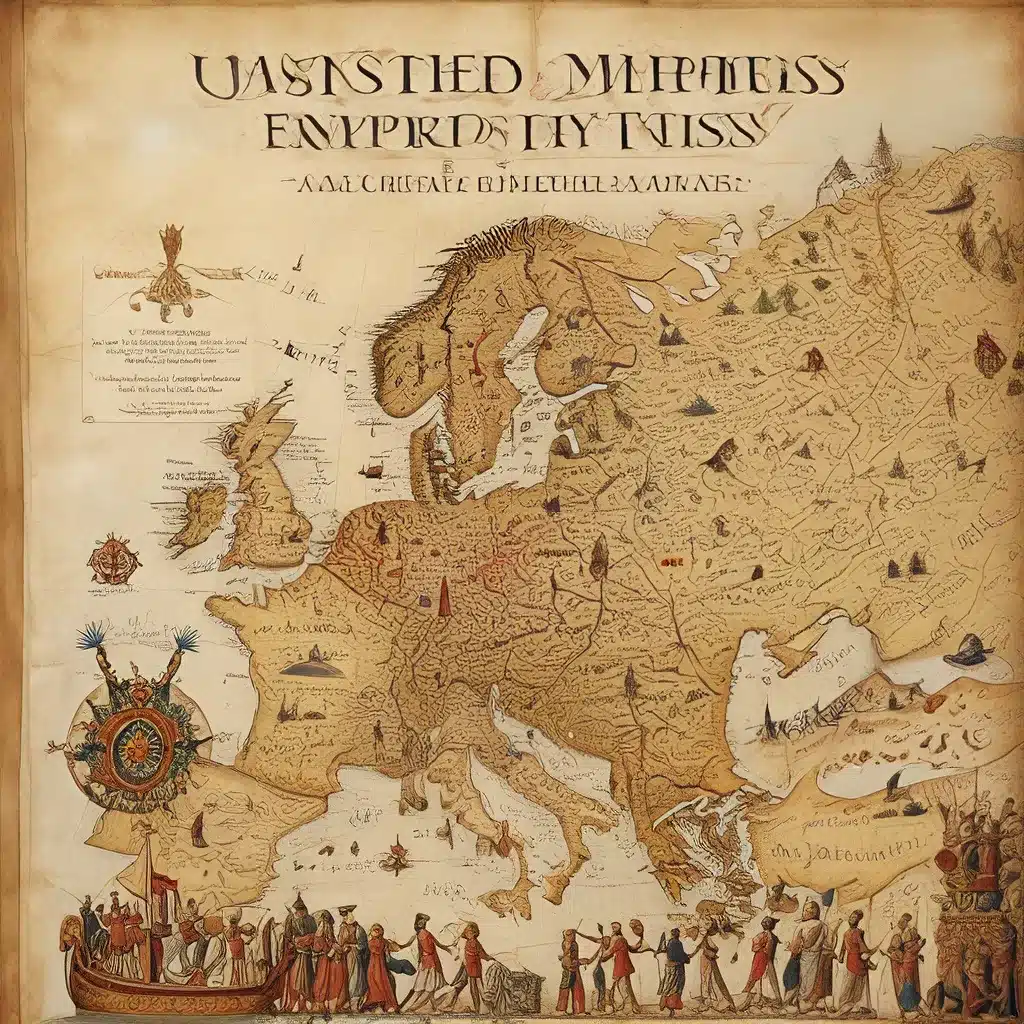
The Rise and Fall of the Achaemenid Persian Empire
The Achaemenid Persian Empire, which flourished from the 6th to 4th centuries BC, was a dominant force in the ancient world, controlling a vast territory that stretched from northern Greece to the borders of India. Under the rule of kings like Cyrus the Great and Darius I, this mighty empire was known for its cultural diversity, technological innovations, and skilled administration.
One of the hallmarks of the Achaemenid Empire was its remarkable architectural and artistic achievements. The grand palaces of Susa and Persepolis were masterpieces of engineering and design, synthesizing traditions and techniques from across the empire’s vast domains. Intricate relief sculptures adorned these palatial complexes, depicting the Persian monarch surrounded by his loyal subjects and courtiers, a testament to the empire’s power and influence.
The Achaemenid kings were also known for their patronage of the arts, commissioning exquisite gold and silver vessels for their lavish banquets. These ornate objects, decorated with images of mythical beasts and stylized floral patterns, serve as tangible reminders of the Achaemenid court’s opulence and cultural sophistication.
However, the Achaemenid Empire’s reign was not without its challenges. The long-standing rivalry between the Persians and the Greeks, culminating in a series of wars during the early 5th century BC, is a well-documented chapter in ancient history. While the Greeks initially struggled against the might of the Achaemenid forces, they ultimately emerged victorious, instilling a sense of pride and relief in their accomplishments.
The Macedonian Conquest and the Seleucid Successors
The Macedonian king Alexander the Great dealt a decisive blow to the Achaemenid Empire, leading his army into Asia and conquering the region in a rapid military campaign between 334-330 BC. Alexander’s victory marked the end of Persian rule and the beginning of a new era of Hellenistic influence in the region.
The Seleucid dynasty, one of the successor states that emerged after Alexander’s death in 323 BC, ruled over much of the former Achaemenid territories for more than two centuries. The Seleucid kings viewed themselves as the heirs to the Achaemenid legacy, governing from the ancient power centers of Babylon and Susa. They also founded numerous new Greek cities throughout their domain, integrating Hellenistic culture with the existing Iranian and local traditions.
The Parthian and Sasanian Dynasties: The Resurgence of Iranian Power
Despite the Seleucid’s long reign, the region would eventually see the rise of two successive native Iranian dynasties: the Parthians and the Sasanians.
The Parthians, who reclaimed the lands lost to the Greeks in the 2nd century BC, were a formidable force in their own right, inflicting numerous defeats on the Romans, the new dominant power in the Mediterranean. The Parthian Empire’s cultural legacy is evident in the hybrid Greco-Persian style of artifacts, such as personal seals, found in this period.
Succeeding the Parthians, the Sasanian dynasty emerged in the 3rd century AD, restoring a balance of power between the Romans and the Persians that endured until the Arab conquest in the 7th century AD. The Sasanians were known for their military prowess, architectural achievements, and the flourishing of Persian culture and traditions during their reign.
Uncovering the Mysteries of Ancient Civilizations
The study of these vanished empires, kingdoms, and dynasties has been a rich field of archaeological and historical inquiry, shedding light on the complexity and interconnectedness of the ancient world. The Lost Kingdoms website, dedicated to exploring the hidden histories of these long-lost civilizations, has been at the forefront of this endeavor.
Through the analysis of diverse cultural artifacts, from ornate royal vessels to intricate personal seals, researchers have been able to reconstruct the social, economic, and political dynamics that shaped these ancient societies. The careful study of architectural remains, such as the grand palaces of Susa and Persepolis, has also provided invaluable insights into the technological prowess and organizational complexity of these vanished empires.
Moreover, the ongoing dialogue between historical accounts and archaeological discoveries has led to the emergence of new theories and interpretations, challenging traditional narratives and pushing the boundaries of our understanding of the past. For instance, the shifting perceptions and attitudes towards the Achaemenid Empire, as reflected in Athenian vase paintings, underscore the complex and often shifting relationships between these ancient civilizations.
The Enduring Legacy of Ancient Empires
The rise and fall of these vanished empires, kingdoms, and dynasties have had a profound and lasting impact on the course of human history. Their cultural, technological, and political legacies continue to shape our understanding of the ancient world and its lasting influence on modern societies.
From the architectural grandeur of the Achaemenid palaces to the intricate personal seals of the Parthian Empire, these artifacts serve as tangible reminders of the ingenuity, creativity, and resilience of these ancient civilizations. By exploring the rich tapestry of their histories, we gain a deeper appreciation for the diverse cultural traditions and the dynamic interconnections that characterized the classical, medieval, and ancient eras.
As we continue to uncover the mysteries of these vanished empires, we are not only expanding our knowledge of the past but also shedding light on the enduring legacy of human civilization and its capacity for both great accomplishments and profound transformations.


